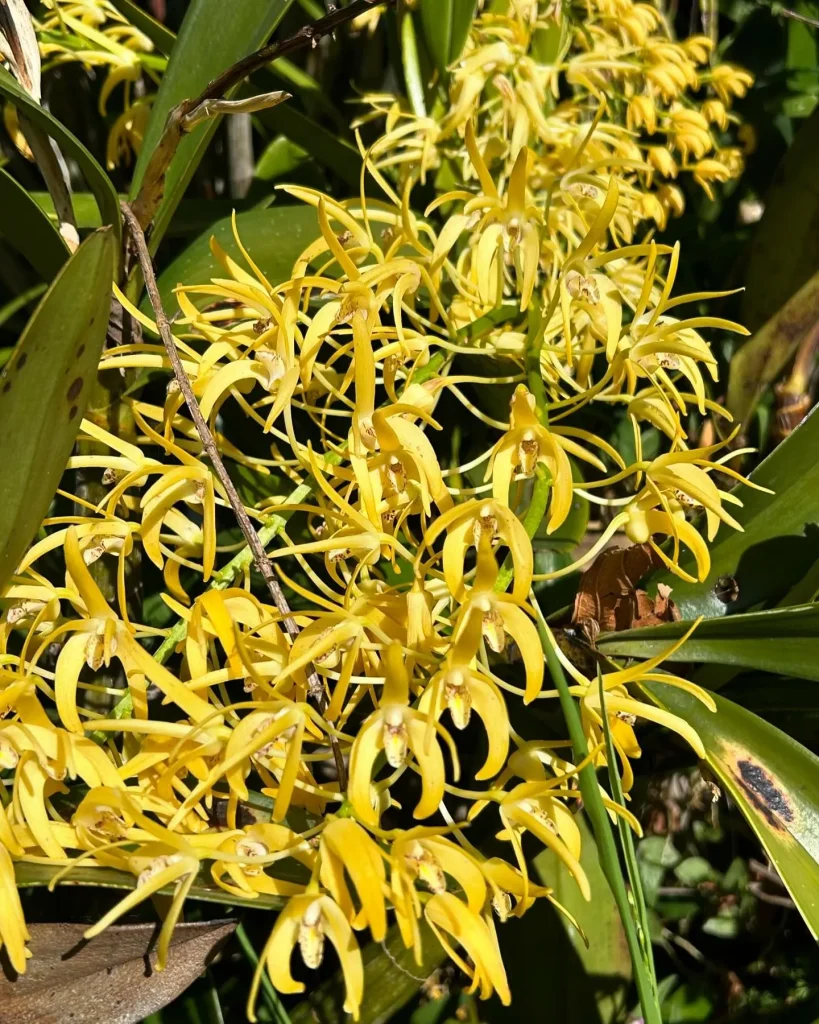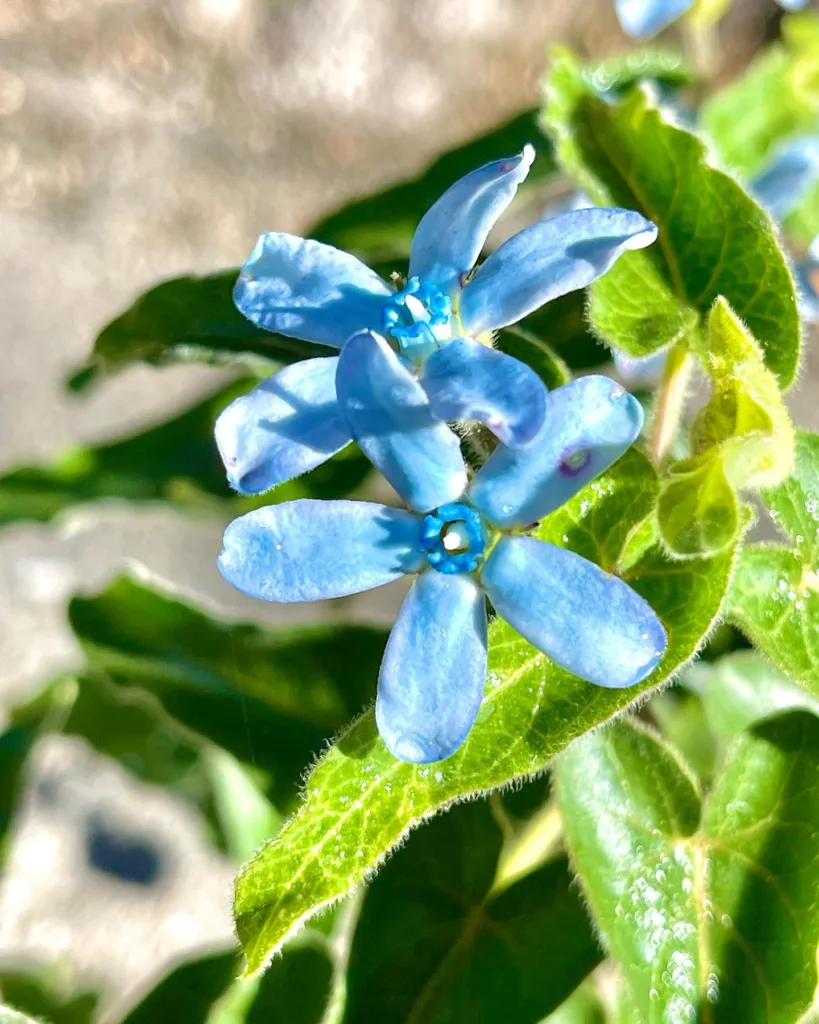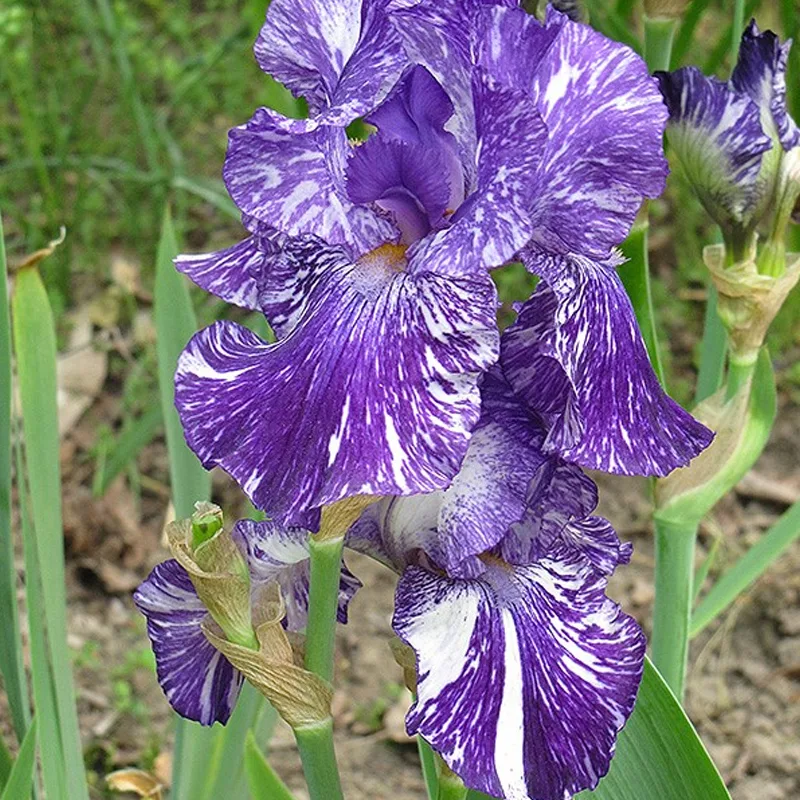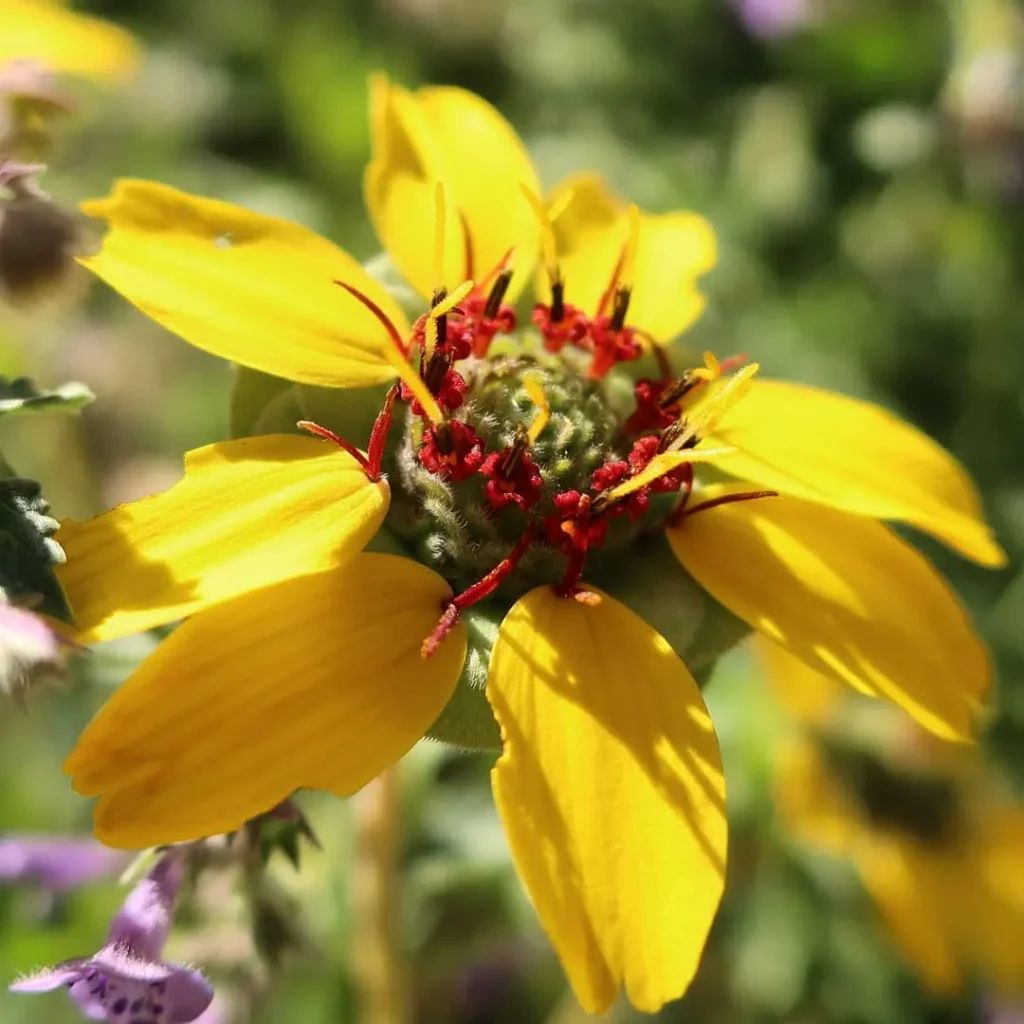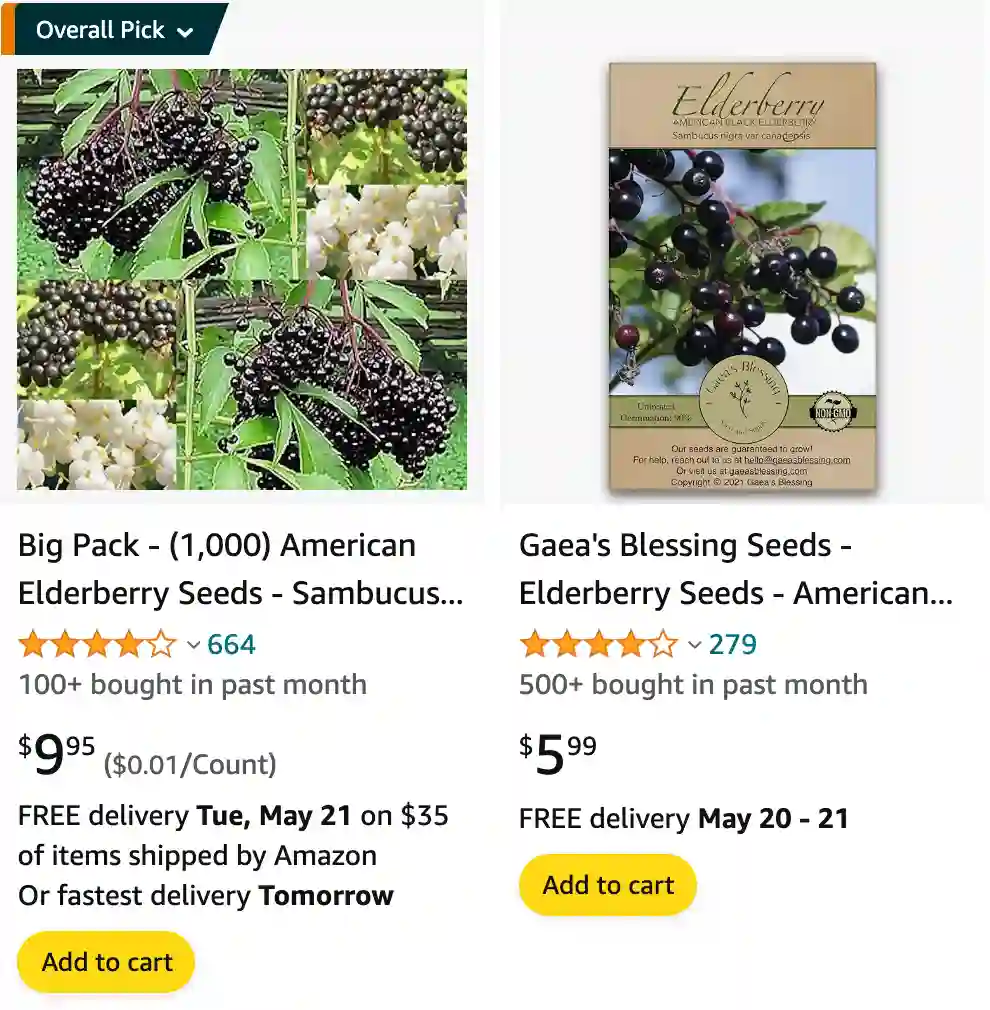
American elderberry vs European elderberry
I’ve noticed that American elderberry tends to have a slightly sweeter taste, whereas European elderberry has a more robust, earthy flavor that I find perfect for making rich syrups.
Are American elderberries poisonous?
No, ripe American elderberries (Sambucus canadensis) are not poisonous and are safe to eat when cooked. However, other parts of the plant, such as the leaves, stems, and unripe berries, contain cyanogenic glycosides and should not be consumed raw as they can cause nausea, vomiting, and diarrhea.
How to grow American elderberry?
Here’s a guide on how to grow American elderberry (Sambucus canadensis):
Planting:
- Timing: The best time to plant American elderberry is in late fall or early spring when the plant is dormant.
- Location: Choose a location that gets full sun to partial shade. Elderberry prefers moist but well-drained soil. If your soil is heavy clay, amending it with compost or other organic matter can improve drainage.
Planting:
- Dig a hole that is twice as wide and as deep as the root ball of your elderberry plant.
- Loosen the soil around the edges of the hole to encourage root growth.
- Position the plant in the center of the hole and ensure the root crown (the area where the stem meets the roots) sits slightly above the surrounding soil level.
- Backfill the hole with the excavated soil, gently tamping it down to remove air pockets.
- Water the plant deeply to settle the soil around the roots.
Aftercare:
- Watering: Water your elderberry regularly, especially during the first growing season and during hot, dry spells. Allow the top inch of soil to dry out slightly between waterings.
- Mulching: Apply a layer of mulch (around 2-3 inches deep) around the base of the plant to retain moisture, suppress weeds, and regulate soil temperature.
- Fertilizing: You may not need to fertilize frequently, especially if your soil is rich in nutrients. However, a balanced fertilizer formulated for flowering shrubs applied once a year in early spring can be beneficial.
- Pruning: Prune lightly after flowering has finished, removing spent blooms, dead or diseased branches, or for shaping purposes. Use sharp, sterilized pruning shears.
Additional Tips:
- American elderberry is a relatively fast-growing shrub that can reach 10-15 feet tall at maturity.
- It’s generally pest and disease resistant, but watch out for common garden problems like aphids or elderberry borer beetles. Insecticidal soap or neem oil solution can be used for control if needed.
- The berries of the American elderberry are technically edible when fully ripe, but they should be cooked thoroughly before consumption as unripe berries can be toxic. However, the main reason to grow this elderberry is for its beautiful flowers and landscape benefits, not the fruit.
Is American elderberry edible?
Yes, ripe American elderberries are edible when cooked. They are commonly used to make jams, jellies, syrups, pies, and wine. However, raw elderberries should be avoided as they can cause digestive issues.
Where to plant American elderberry?
Plant American elderberry in a sunny location with well-drained soil. Avoid planting in low-lying areas prone to waterlogging. Elderberries can tolerate a range of soil types but prefer slightly acidic soil.
Does American elderberry have tannins?
Yes, American elderberries contain tannins, which are natural compounds found in many plants. Tannins contribute to the astringent taste of elderberries and are also present in the leaves and bark of the plant.
Does American elderberry need a pollinator?
American elderberry is self-fertile but will produce higher yields if cross-pollinated by another elderberry variety. Planting multiple elderberry bushes of different cultivars can increase fruit set and improve overall harvest.
How fast does American elderberry grow?
American elderberry bushes have a moderate growth rate and can reach maturity in 2-3 years. Under ideal conditions, they can grow up to 1-2 feet per year.
How to identify American elderberry?
American elderberry can be identified by its deciduous shrub or small tree form, opposite compound leaves with serrated margins, and clusters of creamy-white flowers followed by dark purple to black berries.
How wide does American elderberry grow?
American elderberry bushes typically grow 6-12 feet tall and wide at maturity, though they can spread further under favorable conditions.
Is American elderberry bush native?
Yes, American elderberry (Sambucus canadensis) is native to North America, where it is commonly found in moist woodlands, stream banks, and open areas.
Is American elderberry deer resistant?
American elderberry is moderately deer resistant, but hungry deer may still browse on the foliage, especially in areas with high deer populations. Protective measures such as fencing or repellents may be necessary to deter deer.
Is American elderberry dioecious?
No, American elderberry bushes are not dioecious. They are self-fertile, meaning that individual plants have both male and female reproductive parts and can produce fruit on their own.
Where to buy American elderberry?
American elderberry plants can be purchased from nurseries, garden centers, or online plant retailers specializing in native plants. Look for reputable sources that offer healthy, disease-free plants.
If i die, water my plants!
